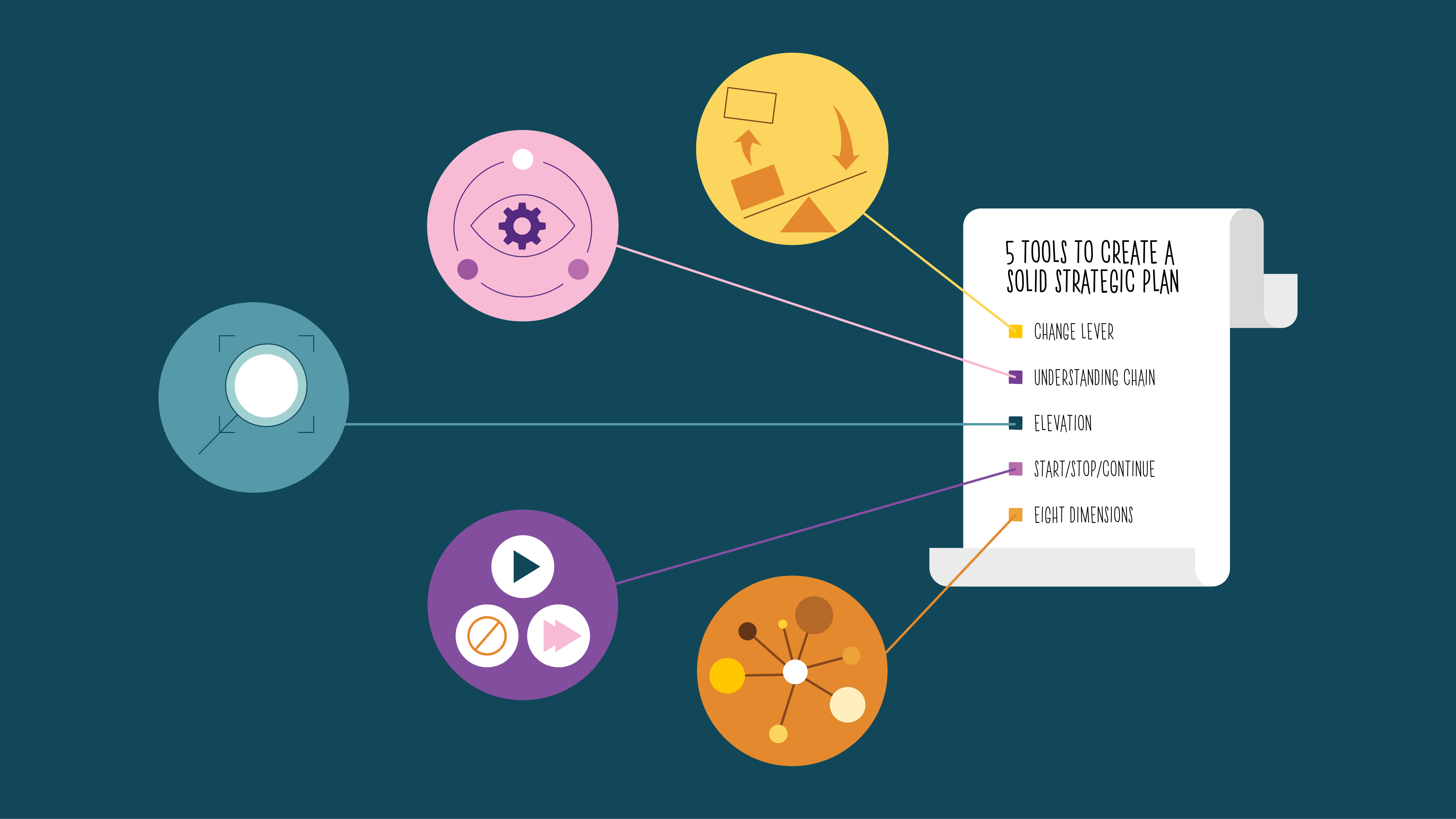Strategic planning is a bit like climbing a mountain. You can’t always see where you’re going, it’s tough work, and it can be downright daunting. But the right tools can make all the difference.
Crampons aside, keep these classic visual thinking tools handy to help you and your team create a strategic plan that puts your organization on solid footing now and in the future.
When we speak with old-school leaders, we often hear the old adage, “Strategy is simple—it’s just deciding where we will play, and how we will win.”
While both are certainly key to good strategy, they ignore what’s needed to execute it: How do we get our people to do something different next year than they’ve been doing this year?
An effective strategic plan must also anticipate who needs to change, what they need to do and stop doing, and why the plan might not work.
To frame these questions, XPLANE has developed a number of planning tools that you can start using today to better define your strategy and bring it to life.
Tool #1: Change Lever Worksheet
Questions it helps answer: Where will we play? How will we win?
To determine where you are today, where you want to go tomorrow, and what you need to do to get there, we recommend you try our go-to tool, the Change Lever Worksheet.
As you begin your planning, start by describing the current state of your organization. What works? What doesn’t? Where are your opportunities?
Now articulate what your desired future state looks like, making note of how big of an advance it will be. What must you do to move the organization from its current state to your desired future state?
Tool #2: Understanding Chain
Question it helps answer: Who needs to change?
You’ll need clarity about who will be most critical to the change effort required to execute a new strategy and what they need to do differently.
For this, we use the Understanding Chain Worksheet.
Discuss who in your organization will have the greatest impact on the strategy. What action do you need them to take? More importantly, what questions will they need to have answered in order to take the desired action?
Tool #3: Elevation Worksheet
Question it helps answer: What do they need to do?
The Elevation Worksheet can help you sort out broad strategies that affect the entire organization from more tactical initiatives that impact smaller groups.
As you begin to co-create the actions needed to achieve your future state, discuss the level of detail on which you’ll focus. Is this an overarching action that touches the entire organization? Or is it a detailed action that impacts one division?
Use the worksheet to capture the distinctions.
Tool #4: Start/Stop/Continue Worksheet
Question it helps answer: What should we stop doing?
A critical step in any planning process is identifying the activities that no longer advance your strategic priorities.
Use the Start/Stop/Continue Worksheet to review activities currently underway in the organization. Are these activities helpful? Problematic? Necessary?
As you begin thinking of actions to reach the future state, use this worksheet to identify unproductive actions you can leave behind.
Tool #5: Eight Dimensions Worksheet
Question it helps answer: Why might this not work?
We’ve found that anticipating possible bumps in the road, especially the unseen effects that a change in one part of the organization has on another, is crucial to a plan’s success.
You can use the Eight Dimensions Worksheet to help plan how to keep your organization in balance.
Discuss your proposed actions and decide what dimension of the organization they will affect. What other parts of the organization will be impacted by that action? And what must change to rebalance the organization?
That Solid Strategic Plan is Within Reach
By themselves, these five tools won’t result in a comprehensive strategic plan. After all, you can’t climb a mountain with a harness and ice axe alone. But our tools can very effectively help you create a robust, successfully executed planning process.
- Pro tip: We use these tools frequently during client projects. Learn more about how we successfully help clients with their strategy and planning.
So pack for the planning journey ahead. A solid strategic plan is yours for the doing.
We invite you to reach out to us with questions or comments about this post.
And for habitual over packers or those who might want a few more tools just in case, we recommend you check out these vision and strategy worksheets on our website.
